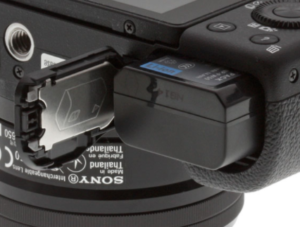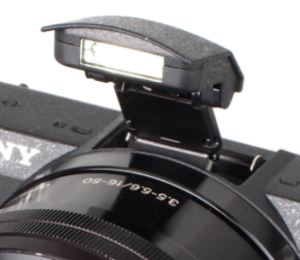How To Easily Stop Your Sony A5100 Overheating!
[the_ad id=”20″]The Sony a5100 is still an extremely popular camera body that is used by a large number of photographers, videographers, and vloggers all over the world due to its excellent image quality and low price tag. Unfortunately, the a5100 does have one major drawback and that is the fact that the camera can be prone to a number of overheating issues. We are constantly seeing people reaching out each month asking for ways to stop their Sony a5100 overheating so we have decided to publish this article to try and help as many of our readers as possible.
Now, chances are that your a5100 is usually overheating when capturing video rather than when using it for photography. On top of this, you can probably consider yourself lucky if you can record HD video for more than forty minutes or video at 60fps for more than ten minutes without the overheating warning flashing up.
This is due to the fact that the Sony a5100 is a photography camera that also does video rather than a camera that has been specifically designed for heavy video use. This means that Sony has skimped on the heat dissipation for the camera and the small size of the a5100 camera body also provides less surface area for it to shed the heat that builds up in it.
Thankfully though, there are a number of steps that you are able to take to try and help prevent your a5100 overheating so quickly when capturing video footage. On top of this, in most situations, the overheating icon is just a warning measure and you can probably continue recording video footage for a little while without issue although we would not recommend that you try it.
[the_ad id=”44″]
Mini Umbrella
Thankfully though, if you do live in a warmer climate and use your a5100 outside on a regular basis you can pick up a cheap mini umbrella to prevent the suns rays from actually reaching your camera body and reduce the speed that your camera can end up overheating.
This is a quick, easy, and cheap fix for a relatively common issue and is well worth considering. Mini umbrellas can usually be mounted to most popular tripods allowing you to protect your camera body from the sun’s light without having an effect on your ability to do your job.
Deal With Battery Heat
As much of this generated heat is held in the battery, you are able to pick up some additional cheap NP-FW50 batteries for your camera and swap them out every so often. Although this is unlikely to help much when capturing 60fps video footage, you should be able to swap your batteries every fifteen minutes or so when recording in regular HD.
This will essentially remove the hot battery and replace it with a fresh cool one but you have to keep in mind that around half of the heat generated by the battery will transfer to the camera body. This means that your fresh battery will heat up quicker than your original one but can be a quick, easy, and cheap way to increase the amount of time you have to capture your HD video footage without having the overheating warning light.
Thankfully, if you do have a slightly higher budget available to remove the overheating issues from your a5100 there an even more effective solution available. You can purchase a NP-FW50 dummy battery and a USB power bank to totally remove the heat generated from a NP-FW50 battery.
This is probably the most effective solution that you are going to get for your a5100 as not only is your USB power bank outside of your a5100 camera body, the vast majority of modern USB power banks have some excellent heat dissipation too. This totally removes the primary heat source from your camera and can drastically increase the amount of time you can capture video footage without issue. Although the NP-FW50 dummy battery will transfer some heat to your camera body, it is at a much lower rate than what the internal battery transfers.
[the_ad id=”45″]
Increase Heat Dissipation
Not only does use a camera cash increase the overall surface area of your camera meaning it takes more heat to cause any overheating issues but the metal material of the cage can dissipate the heat much easier than your camera body. Although we would always recommend that you go with the NP-FW50 dummy battery and USB power bank method that we covered above as it is much more effective, some Sony a5100 owners have posted saying they have had success by housing their camera in a cage.
Check Your SD Card Datarate
Thankfully, as technology has progressed, the price tags for decent, high data rate SD cards have fallen and are often at similar prices to their slower counterparts. If you are recording HD and 60fps video with your Sony a5100 then we would recommend that you check the transfer speed of your current SD cards and upgrade to a suitable SD card if they are below 90MB/s shooting speed or 170MB/s transfer speed.
This will allow your a5100 to write its data to your SD card as a quick speed and can potentially drastically reduce the heat generated from your card while recording HD and 60fps video footage. As you have removed the second-highest heat source in your camera body, this increases the amount of time you have available to capture your video footage free from any overheating warnings.
Switch To External Storage
It works in a similar way to using a USB power bank with a dummy battery by totally removing the second largest heat source in your a5100 from the camera body. On the flip side of this though, a modern SD card is much cheaper and can often provide you with very similar results while also being fully functional for dynamic a5100 who work in a number of different locations.
Try Thermal Paste
Personally, we are not fans of using any type of thermal paste on any of our camera equipment as it can end up getting everywhere and there are no guides or tutorials available explaining where you should apply the paste for the a5100 either. We just wanted to include this in our list as some of our tech-savvy readers may already have some thermal paste on hand and have the knowledge of where to apply it for optimal results.
[the_ad id=”46″]
Tilt The LCD Display

The third-largest source of heat on the Sony a5100 is actually the LCD screen but thankfully, there is a quick, easy, and free measure that you can take to help increase airflow and increase the dissipation of the heat that it generates. Simply keep the LCD screen of your a5100 tilted open when recording video and you essentially double the airflow available to the screen to help keep it as cool as possible.
Considering that this is so quick to do and totally free, we would highly recommend that you try to build up the habit of keeping your LCD panel tilted when recording video. Although your battery and SD card both produce the majority of the head in the camera body, taking this simple step can help extend the amount of time you can record without getting the overheating warning.
Open The Battery Door

Although hot swapping spare batteries or using a NP-FW50 dummy battery and USB power bank combo are much more efficient at reducing heat you can try simply opening the battery door on your a5100 during use. Use a little tape to protect your battery and keep it in place but if you are on a tight budget and are unable to purchase any of the additional camera accessories then this may be the only step you can take towards reducing the heat generated by your camera’s battery.
Open The Flash Housing

Although this one is based on theory rather than actual practice, we feel that if you are on a tight budget and are looking to take every step available to increase airflow and heat dissipation for your camera body then opening the flash cover is an obvious step to try. Although this will depend on the camera accessories that you have mounted to your a5100 as some will prevent the flash from being opened, it could be worth trying.
Take Advantage Of Airplane Mode

Airplane mode is a quick and easy way to instantly turn off all of the wireless technology available in your Sony a5100 that can end up requiring a surprising amount of power from your battery and thus generating more heat. We would imagine that the vast majority of a5100 users don’t actually use any of the wireless technology on the camera body while actually recording their video footage or taking photographs so just turn it off.
Although the power requirement is minimal compared to what your camera will need for capturing high definition video at 60fps, it is free, quick, and easy to do so if you are on a budget, it is well worth trying out in our opinion.
[the_ad id=”60″]
Check Your Frames Per Second
As we have specifically mentioned a few times throughout the article, capturing your video footage at 60fps requires a large amount of power from your camera and can generate an absolute ton of heat. Although you may have to use the 60fps frames per second setting often, it may not be essential all of the time. If you can get away with using a lower fps setting on your a5100 then try it as it can reduce the heat generated from your battery and potentially increase your recording time before you get your overheating warning.
Update To Latest Firmware
Our final recommendation to prevent your Sony a5100 overheating is to ensure that you are running the latest version of the firmware. Depending on when your a5100 was initially shipped it may still have the original version of the firmware running on it and Sony have released a number of updates since then. Although we are unaware if any of the firmware updates for the a5100 are targeted towards helping with its overheating issues, two updates for the Sony a6000 were specifically released to help deal with overheating. Considering that updating your camera’s firmware is quick and free, we feel that it is well worth trying, especially if you are on a tight budget as it may be able to help.
